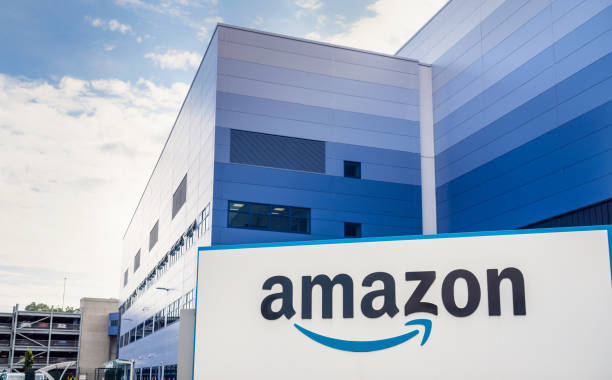In the realm of e-commerce giants, two platforms stand tall: Amazon and Walmart. Both are household names, offering immense opportunities for sellers to reach a vast audience and drive sales. But when it comes to choosing between them, which is the better option? So, let’s dive into the exciting world of selling on Amazon vs Walmart to find out!
The Online Retail Powerhouse
Amazon needs no introduction. It’s the unrivaled king of e-commerce, boasting over 300 million active customers worldwide and accounting for nearly half of all online retail sales in the United States. So, for sellers, Amazon offers an unparalleled reach and exposure to a massive audience hungry for products of all kinds.
Pros of Selling on Amazon:
- Vast Customer Base: With millions of loyal customers, your products have the potential to reach buyers across the globe.
- Fulfillment by Amazon (FBA): The FBA program takes care of storage, packaging, and shipping, allowing sellers to focus on growing their business without the hassle of logistics.
- Prime Membership: By participating in FBA, sellers can offer Prime shipping to customers, tapping into the allure of fast and free delivery.
- Robust Analytics: Amazon provides detailed insights into sales performance, customer behavior, and market trends, empowering sellers to make data-driven decisions.
- Global Marketplace: Expand your reach beyond borders with international marketplaces, reaching customers in Europe, Asia, and beyond.
Walmart: The Retail Giant’s Online Empire
While Walmart may have started as a brick-and-mortar retail giant, it has successfully transitioned into the digital age, leveraging its vast resources and brand recognition to compete with the likes of Amazon in the online space. Also, with a focus on value and convenience, Walmart offers sellers a unique platform to showcase their products to millions of shoppers.

Pros of Selling on Walmart:
- Massive Footprint: Walmart serves over 265 million customers weekly across its physical and online channels, providing sellers with access to a substantial and diverse audience.
- Omnichannel Integration: Seamlessly integrate your online and offline sales efforts with Walmart’s omnichannel capabilities, reaching customers through multiple touchpoints.
- Competitive Fees: Walmart often boasts lower selling fees compared to Amazon, allowing sellers to maximize their profits with every sale.
- Brand Recognition: Leverage Walmart’s trusted brand name to instill confidence in your products and attract customers looking for reliability and quality.
- Seller Support: Walmart offers dedicated support and resources for sellers, guiding them through the onboarding process and providing assistance whenever needed.
Platform Accessibility and Requirements
Amazon:
- Seller Accounts: Amazon offers various types of seller accounts, including Individual and Professional plans, with different fee structures and features.
- Registration Process: Signing up as a seller on Amazon involves creating an account, providing business information, and agreeing to the terms and conditions.
- Global Reach: Amazon operates in multiple countries, allowing sellers to access international markets through unified or separate seller accounts.
- Seller Central: The Seller Central dashboard serves as a hub for managing listings, orders, inventory, and performance metrics.
Walmart:
- Seller Center: Walmart’s Seller Center is the central hub for sellers to manage their listings, orders, and performance metrics.
- Application Process: Sellers must apply and get approved to sell on Walmart’s marketplace, which involves meeting certain criteria and providing business information.
- US-Based Sellers: Initially, Walmart’s marketplace was only open to US-based sellers, but it has since expanded to include international sellers in some categories.
- Integration Partners: Walmart offers integration with third-party service providers to facilitate listing creation, order management, and fulfillment.

Product Categories and Restrictions
Amazon:
- Extensive Categories: Amazon allows sellers to list products in a wide range of categories, including electronics, apparel, books, and groceries.
- Gating and Approval: Certain categories, such as Health & Personal Care and Grocery in Amazon, may require approval or additional documentation from sellers.
- Restricted Products: Amazon prohibits the sale of certain products, including hazardous materials, counterfeit goods, and illegal items.
Walmart:
- Category Focus: Walmart’s marketplace focuses on categories such as home, electronics, fashion, and groceries, with an emphasis on everyday essentials and value-oriented products.
- Category Restrictions: Some categories, like Firearms and Alcohol, are restricted or require special approval to sell on Walmart’s platform.
- Quality Standards: Walmart has strict quality standards and may remove listings that don’t meet its requirements for product authenticity, safety, and customer satisfaction.
By understanding the platform accessibility, requirements, product categories, and restrictions of Amazon and Walmart, sellers can make informed decisions about where to list their products and how to navigate the unique opportunities and challenges of each marketplace.

Amazon vs Walmart The Verdict: Choosing the Right Platform for You
So, which platform is the ultimate winner in the battle of Amazon vs Walmart? So, the truth is, that it depends on your unique business goals, target audience, and selling strategy.
If you’re looking to tap into a vast global audience and benefit from streamlined logistics, Amazon may be the ideal choice for you. With its Prime membership and FBA program, you can offer unparalleled convenience to customers while scaling your business on a massive scale.
On the other hand, if you value brand recognition, competitive fees, and omnichannel integration, Walmart might be the perfect fit. By aligning your brand with Walmart’s trusted reputation and leveraging its extensive physical and online presence, you can reach millions of shoppers while maximizing your profitability.







